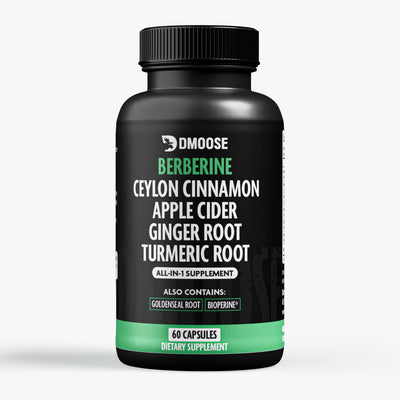Constantly worrying about blood sugar levels is exhausting. From monitoring your diet to avoiding complications like heart disease and kidney damage, it’s a lot to manage.
But the good news? Certain foods can help regulate blood sugar naturally. In this blog, we’ll explore 15 of them.
15 Foods to Lower Sugar Levels
1. Beans and Lentils

Beans and lentils are an easy way to get your daily dose of fiber, protein, and magnesium. They’re rich in nutrients that can help reduce blood sugar levels after meals by slowing down digestion time.
According to a study, adding black beans or chickpeas to a rice meal significantly reduces post-meal blood sugar levels.
Studies show that eating beans and lentils can not only help with blood sugar regulation but may also help prevent diabetes.
2. Leafy Green Vegetables

Leafy green vegetables are essential to any healthy diet, but they are especially beneficial for people with diabetes. That’s because they contain a type of carbohydrate called soluble fiber, which helps slow down sugar absorption in the bloodstream.
Eating leafy greens can help keep glucose levels under control and prevent post meal spikes. In addition, greens are a good source of vitamins and minerals, including magnesium and iron.
They contain chlorophyll, which has antioxidant and anti-inflammatory properties. For all these reasons, incorporating greens into your diet is a great way to manage blood sugar levels and improve your overall health.
3. Eggs

Eggs are a remarkably nutrient-dense food with a full concentration of protein, good fats, vitamins, minerals, and antioxidants. Consuming eggs has been associated with better blood sugar regulation in several studies.
A study on 42 people with prediabetes or type 2 diabetes and obesity found that eating one large egg every day significantly reduced fasting blood sugar by 4.4% and improved insulin sensitivity compared to egg substitutes.
Additionally, a 14-year follow-up research in 7,002 Korean adults found that eating eggs frequently, two to four servings per week, was associated with a 40% lower incidence of diabetes in men but not in women.
4. Berries

Berries are an excellent choice for regulating glucose levels, since they are packed with fiber, vitamins, minerals and antioxidants.
According to a study, people with prediabetes who consumed 2 cups (250 grams) of red raspberries with a high-carb meal had significantly lower post-meal insulin and blood sugar levels compared to a control group.
5. Oats

Oats and oat bran contain a high soluble fiber content which may help achieve better glucose management.
According to a review, oat consumption significantly decreases the level of HbA1c (a marker of long-term sugar control) and fasting sugar compared to control meals.
Additionally, participants in the study were instructed to drink 7 ounces (200 mL) of water combined with 27.3 grams of oat bran before consuming white bread. This combination was found to lower post-meal blood sugar levels compared to drinking plain water.
6. Broccoli

Broccoli produces sulforaphane (an isothiocyanate compound with blood-sugar-reducing properties) when it gets chopped or chewed. It is produced because of the reaction between glucoraphanin (chemical compound) and myrosinase (enzyme), both of which are present in broccoli.
Studies have revealed that sulforaphane-rich broccoli extract has potent anti-diabetic benefits and reduces oxidative stress indicators, which help improve insulin sensitivity and lower glucose levels.
Consumption of broccoli sprouts and other cruciferous vegetables has been demonstrated to help enhance insulin sensitivity in diabetic patients while decreasing the occurrence of type 2 diabetes in other people.
The best way to increase sulforaphane availability is to eat broccoli and broccoli sprouts raw or minimally steamed. Or, you can prepare it with active sources of myrosinase, such as mustard seed powder.
7. Nuts

Nut consumption has potential benefits for controlling blood sugar levels.
According to a study, a low-carb diet including peanuts and almonds throughout the day lowered fasting and post-meal glucose levels in 25 patients with type 2 diabetes.
Additionally, a review suggests that, compared to a control diet, type 2 diabetics' fasting sugar levels and hemoglobin A1c (HbA1c) were significantly lower on diets that prioritized tree nuts at an average daily consumption of 2 ounces (56 grams).
8. Avocados

Avocados are tasty and creamy and may also have significant advantages for controlling blood glucose. They are abundant in fiber, vitamins, minerals, and healthy fats, and studies have shown that including them in meals helps regulate blood sugar levels.
According to a study, avocados may help reduce blood sugar levels and guard against the onset of metabolic syndrome/insulin resistance—a group of illnesses that includes high blood pressure and high blood sugar and increases the risk of developing chronic diseases.
9. Okra

Okra is a nutrient-rich vegetable found in many parts of the world. Also known as Lady's Finger, okra is often used in soups and stews. Apart from being a delicious addition to any meal, okra has also been shown to help reduce glucose levels in your blood.
Because of its high fiber content, which slows the absorption of sugar into the bloodstream, okra is believed to be effective in controlling blood sugar spikes.
Additionally, okra is a good source of vitamins and minerals, including magnesium, which has also been shown to help regulate blood glucose levels.
In Turkey, okra seeds have been a natural cure for diabetes for a very long time due to their effective glucose-lowering ability.
The primary polysaccharide in okra, rhamnogalacturonan, has been discovered to possess potent anti-diabetic properties. Okra also contains the flavonoids isoquercitrin and quercetin 3-O-gentiobioside, which work by inhibiting specific enzymes that lower blood sugar.
10. Flax Seeds

Flax seeds have been getting a lot of attention lately as a superfood. And for good reason, they're packed with nutrients. But did you know that flax seeds can also help reduce blood sugar levels?
Flaxseed supplementation can help improve glycemic control in patients with type 2 diabetes. The exact mechanism is yet unknown, but it is thought that flax seeds' high fiber content helps slow the absorption of sugar from the gastrointestinal tract.
In addition, the lignans present in flax seeds may help modulate insulin sensitivity. So if you're looking for a natural way to manage blood sugar levels, add some flax seeds to your diet. You just might be surprised at the results.
11. Animal Proteins: Salmon

Salmon is an excellent protein source that is rich in omega-3 fatty acids, and several vitamins and minerals. The fish has been shown to have numerous health benefits, such as reducing the risk of heart disease, stroke, and cancer.
The omega-3 fatty acids in salmon help reduce inflammation. It is important because chronic inflammation can lead to a variety of health problems, including diabetes.
Salmon is also a good source of vitamin D, which manages your sugar level and provides numerous health benefits. So next time you're looking for a nutritious meal, be sure to include salmon on the menu.
12. Brown Rice

We all know that overeating sugary items can lead to health problems like diabetes. But did you know that rice can also increase your risk of developing diabetes? That's because most of the rice we eat is white rice, which has a high glycemic index.
It means it raises your glucose amount more quickly than other foods. Brown rice, on the other hand, has a lower glycemic index and doesn't raise it as much.
Brown rice is rich in micronutrients, including fiber, vitamins, and minerals. The fiber helps slow down the digestion of carbohydrates, which can help reduce sugar spikes. It contains a compound called ferulic acid, which is quite effective in reducing glucose.
This whole grain is also a good source of magnesium, which boosts insulin sensitivity and helps regulate the level of sugar in your blood.
13. Soybeans

Soybeans are legumes that originate from East Asia and are commonly used in Asian cuisine, and they're also a key ingredient in many vegan and vegetarian dishes.
Soybeans are an excellent source of protein, fiber, and nutrients like iron and calcium. They also contain phytonutrients that have various health benefits, one of which is their ability to lower blood sugar levels.
Their consumption may help regulate glucose in people with diabetes. The exact mechanisms are not yet fully understood, but soybeans may slow glucose absorption from the digestive tract, which helps prevent its accumulation after meals.
14. Citrus Fruits

Despite the sweetness of many citrus fruits, research suggests they may help manage sugar levels. Citrus fruits are categorized as low glycemic index fruits since they have less impact on blood sugar than other fruit varieties like watermelon and pineapple.
Oranges and grapefruit are examples of citrus fruits that are high in fiber and contain plant compounds like naringenin, a polyphenol with potent anti-diabetic actions.
Consuming whole citrus fruits may enhance insulin sensitivity, lower HbA1c levels, and prevent the onset of diabetes.
15. Yogurt/Fermented Food

We all know that healthy eating is essential for our overall well-being. But did you know that certain foods can help reduce blood sugar levels? One group of foods that can be particularly beneficial for people with diabetes is fermented foods.
Fermented foods like yogurt, kimchi, and sauerkraut are rich in probiotics, which are live bacteria that help promote a healthy digestive system. Some probiotics can help manage blood sugar levels by improving insulin sensitivity and promoting a more efficient metabolism.
So if you're looking for a natural way to stabilize your blood sugar, add some fermented foods to your diet!
FAQs
1. Which foods can help lower blood sugar quickly?
There are a few foods that can lower blood sugar quickly. These include non-starchy vegetables like broccoli, leafy greens, and cucumbers; low glycemic fruits like berries and grapefruit; and lean protein sources like chicken, turkey, and fish.
Additionally, consuming plenty of water, avoiding sugary drinks and snacks, and engaging in regular physical activity can all help keep glucose levels under control.
2. Which foods increase sugar levels?
Foods that increase blood sugar include candy, cake, cookies, and other sweet snacks. It's essential to be mindful of your glucose levels when eating foods like these, as they can spike blood sugar levels quickly. If you're trying to stabilize blood sugar levels, it's best to avoid these foods altogether.
3. What is the cause of high blood sugar?
Many potential causes of high blood sugar include obesity, a sedentary lifestyle, and consuming a highly processed carbohydrate dense diet.
4. How do you feel when your sugar is high?
When blood sugar is high, you urinate frequently, feel thirsty and tired, and experience blurred vision.
Wrapping Up
High blood sugar is no joke. It can be a significant health issue, but thankfully, many foods can help lower it. You can take a big step towards better health by incorporating some of the best foods to lower high blood sugar into your diet.
We hope this list has given you some ideas for healthy and delicious meals to help keep your blood sugar in check.
Reading List
Article Sources
- Asif, Mohammad. “The Prevention and Control the Type-2 Diabetes by Changing Lifestyle and Dietary Pattern.” Journal of Education and Health Promotion, vol. 3, Feb. 2014, p. 1. PubMed Central, https://doi.org/10.4103/2277-9531.127541.
- Bahadoran, Zahra, et al. “Effect of Broccoli Sprouts on Insulin Resistance in Type 2 Diabetic Patients: A Randomized Double-Blind Clinical Trial.” International Journal of Food Sciences and Nutrition, vol. 63, no. 7, Nov. 2012, pp. 767–71. PubMed, https://doi.org/10.3109/09637486.2012.665043.
- Den Hartogh, Danja J., and Evangelia Tsiani. “Antidiabetic Properties of Naringenin: A Citrus Fruit Polyphenol.” Biomolecules, vol. 9, no. 3, Mar. 2019, p. 99. PubMed Central, https://doi.org/10.3390/biom9030099.
- Dreher, Mark L. “Whole Fruits and Fruit Fiber Emerging Health Effects.” Nutrients, vol. 10, no. 12, Nov. 2018, p. 1833. PubMed Central, https://doi.org/10.3390/nu10121833.
- Hou, Qingtao, et al. “The Metabolic Effects of Oats Intake in Patients with Type 2 Diabetes: A Systematic Review and Meta-Analysis.” Nutrients, vol. 7, no. 12, Dec. 2015, pp. 10369–87. PubMed Central, https://doi.org/10.3390/nu7125536.
- Hou, Yun-Ying, et al. “A Randomized Controlled Trial to Compare the Effect of Peanuts and Almonds on the Cardio-Metabolic and Inflammatory Parameters in Patients with Type 2 Diabetes Mellitus.” Nutrients, vol. 10, no. 11, Oct. 2018, p. 1565. PubMed Central, https://doi.org/10.3390/nu10111565.
- Houghton, Christine A. “Sulforaphane: Its ‘Coming of Age’ as a Clinically Relevant Nutraceutical in the Prevention and Treatment of Chronic Disease.” Oxidative Medicine and Cellular Longevity, vol. 2019, Oct. 2019, p. 2716870. PubMed Central, https://doi.org/10.1155/2019/2716870.
- Jenkins, D. J. A., et al. “The Relation of Low Glycaemic Index Fruit Consumption to Glycaemic Control and Risk Factors for Coronary Heart Disease in Type 2 Diabetes.” Diabetologia, vol. 54, no. 2, 2011, pp. 271–79. PubMed Central, https://doi.org/10.1007/s00125-010-1927-1.
- Lee, Jieul, and Jihye Kim. “Egg Consumption Is Associated with a Lower Risk of Type 2 Diabetes in Middle-Aged and Older Men.” Nutrition Research and Practice, vol. 12, no. 5, Oct. 2018, pp. 396–405. PubMed Central, https://doi.org/10.4162/nrp.2018.12.5.396.
- Liu, Juan, et al. “Structure Characterisation of Polysaccharides in Vegetable ‘Okra’ and Evaluation of Hypoglycemic Activity.” Food Chemistry, vol. 242, Mar. 2018, pp. 211–16. PubMed, https://doi.org/10.1016/j.foodchem.2017.09.051.
- Okunade, Olukayode, et al. “Supplementation of the Diet by Exogenous Myrosinase via Mustard Seeds to Increase the Bioavailability of Sulforaphane in Healthy Human Subjects after the Consumption of Cooked Broccoli.” Molecular Nutrition & Food Research, vol. 62, no. 18, Sept. 2018, p. e1700980. PubMed, https://doi.org/10.1002/mnfr.201700980.
- Pourafshar, Shirin, et al. “Egg Consumption May Improve Factors Associated with Glycemic Control and Insulin Sensitivity in Adults with Pre- and Type II Diabetes.” Food & Function, vol. 9, no. 8, Aug. 2018, pp. 4469–79. PubMed, https://doi.org/10.1039/c8fo00194d.
- Steinert, Robert E., et al. “Effect of Consuming Oat Bran Mixed in Water before a Meal on Glycemic Responses in Healthy Humans—A Pilot Study.” Nutrients, vol. 8, no. 9, Aug. 2016, p. 524. PubMed Central, https://doi.org/10.3390/nu8090524.
- Teng, Wendi, et al. “Sulforaphane Prevents Hepatic Insulin Resistance by Blocking Serine Palmitoyltransferase 3-Mediated Ceramide Biosynthesis.” Nutrients, vol. 11, no. 5, May 2019, p. 1185. PubMed Central, https://doi.org/10.3390/nu11051185.
- Viguiliouk, Effie, et al. “Effect of Tree Nuts on Glycemic Control in Diabetes: A Systematic Review and Meta-Analysis of Randomized Controlled Dietary Trials.” PloS One, vol. 9, no. 7, 2014, p. e103376. PubMed, https://doi.org/10.1371/journal.pone.0103376.
- Wang, Ping‐Yu, et al. “Higher Intake of Fruits, Vegetables or Their Fiber Reduces the Risk of Type 2 Diabetes: A Meta‐analysis.” Journal of Diabetes Investigation, vol. 7, no. 1, Jan. 2016, pp. 56–69. PubMed Central, https://doi.org/10.1111/jdi.12376.
- Wien, Michelle, et al. “A Randomized 3×3 Crossover Study to Evaluate the Effect of Hass Avocado Intake on Post-Ingestive Satiety, Glucose and Insulin Levels, and Subsequent Energy Intake in Overweight Adults.” Nutrition Journal, vol. 12, Nov. 2013, p. 155. PubMed, https://doi.org/10.1186/1475-2891-12-155.
- Winham, Donna M., et al. “Glycemic Response to Black Beans and Chickpeas as Part of a Rice Meal: A Randomized Cross-Over Trial.” Nutrients, vol. 9, no. 10, Oct. 2017, p. 1095. PubMed Central, https://doi.org/10.3390/nu9101095.
- Xiao, Di, et al. “Attenuation of Postmeal Metabolic Indices with Red Raspberries in Individuals at Risk for Diabetes: A Randomized Controlled Trial.” Obesity (Silver Spring, Md.), vol. 27, no. 4, Apr. 2019, pp. 542–50. PubMed, https://doi.org/10.1002/oby.22406.












